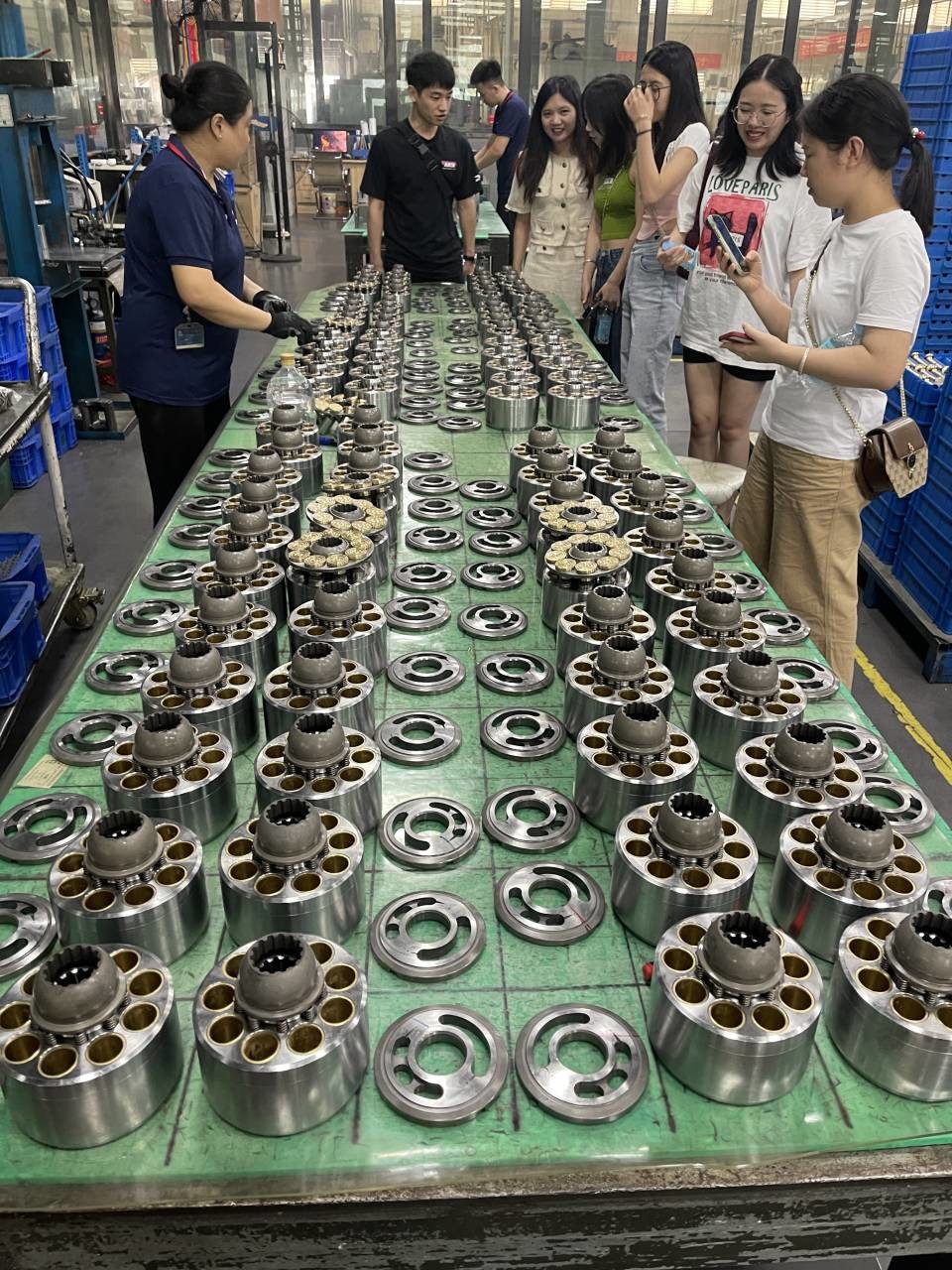
How to Choose the Right Excavator: A Comprehensive Guide
Excavators are indispensable in construction, mining, and landscaping, but selecting the right one requires careful consideration of factors like terrain, workload, and budget. Whether you’re a contractor or a project manager, this guide breaks down the essentials to help you make an informed decision.
Start by evaluating the project’s scope and environment. For large-scale mining or heavy excavation, a tracked excavator (e.g., Caterpillar EC750D) is ideal due to its stability on uneven ground and superior lifting capacity. For urban projects with limited space, a compact zero-tail-swing model (e.g., Kubota U25-3) minimizes collision risks while maintaining precision. If mobility is critical, wheeled excavators (e.g., Volvo EW series) offer road-ready speeds up to 35 km/h, perfect for roadworks or frequent site changes.
Excavators range from mini models under 1 ton for tight spaces to 100+ ton giants for mining. Key size categories include:
Mini excavators (1–6 tons): Ideal for landscaping, small foundations, or indoor projects.
Medium excavators (6–30 tons): Versatile for general construction and demolition.
Large excavators (30+ tons): Built for heavy-duty tasks like quarrying or large-scale earthmoving.
Power requirements depend on hydraulic capacity. High-flow systems (26+ GPM) handle attachments like breakers efficiently, while standard-flow machines suit lighter tasks.
Engine: Opt for diesel engines from reputable brands (e.g., Cummins, Yanmar) to ensure durability and compliance with emission standards.
Hydraulics: Look for reliable pumps and valves (e.g., Kawasaki, Bosch Rexroth) to maximize efficiency and reduce downtime.
Operator Comfort: A climate-controlled cab, ergonomic controls, and safety features (e.g., FOPS-certified cabins) boost productivity and reduce fatigue.
Modern excavators can swap attachments to tackle diverse tasks:
Buckets: Standard, rock, or dredging buckets adapt to soil types.
Hydraulic breakers: For demolition or rock crushing.
Long-reach arms: Extend up to 100 feet for dredging or deep excavation.
Ensure compatibility with quick couplers (e.g., Cat® Pin Grabber) for swift changes.
Reputable brands like Caterpillar, Hitachi, and Volvo offer proven reliability, while Chinese brands (e.g., Boleo) provide cost-effective alternatives. Always verify:
Warranty and Service Networks: A strong dealer network ensures timely repairs and parts availability.
Resale Value: Brands like Komatsu and John Deere retain higher resale prices.
For used excavators, inspect:
Engine and Hydraulics: Check for leaks, abnormal noises, or black smoke.
Undercarriage: Look for worn tracks or misaligned rollers.
Fluid Samples: Analyze oil for contamination to assess internal wear.
Electric and hybrid models (e.g., Boleo ZEWEIT series) reduce noise and emissions, making them ideal for urban projects.
Match Attachments to Tasks: A rock bucket won’t excel in clay.
Consider Total Costs: Fuel, maintenance, and downtime impact ROI.
Consult Experts: Dealers can tailor solutions to your needs.
If you need any help, please feel free to contact us at any time
Email: belparts02@gmail.com
Whatsapp: +86 189 2896 5241

How to Choose the Right Excavator: A Comprehensive Guide
Excavators are indispensable in construction, mining, and landscaping, but selecting the right one requires careful consideration of factors like terrain, workload, and budget. Whether you’re a contractor or a project manager, this guide breaks down the essentials to help you make an informed decision.
Start by evaluating the project’s scope and environment. For large-scale mining or heavy excavation, a tracked excavator (e.g., Caterpillar EC750D) is ideal due to its stability on uneven ground and superior lifting capacity. For urban projects with limited space, a compact zero-tail-swing model (e.g., Kubota U25-3) minimizes collision risks while maintaining precision. If mobility is critical, wheeled excavators (e.g., Volvo EW series) offer road-ready speeds up to 35 km/h, perfect for roadworks or frequent site changes.
Excavators range from mini models under 1 ton for tight spaces to 100+ ton giants for mining. Key size categories include:
Mini excavators (1–6 tons): Ideal for landscaping, small foundations, or indoor projects.
Medium excavators (6–30 tons): Versatile for general construction and demolition.
Large excavators (30+ tons): Built for heavy-duty tasks like quarrying or large-scale earthmoving.
Power requirements depend on hydraulic capacity. High-flow systems (26+ GPM) handle attachments like breakers efficiently, while standard-flow machines suit lighter tasks.
Engine: Opt for diesel engines from reputable brands (e.g., Cummins, Yanmar) to ensure durability and compliance with emission standards.
Hydraulics: Look for reliable pumps and valves (e.g., Kawasaki, Bosch Rexroth) to maximize efficiency and reduce downtime.
Operator Comfort: A climate-controlled cab, ergonomic controls, and safety features (e.g., FOPS-certified cabins) boost productivity and reduce fatigue.
Modern excavators can swap attachments to tackle diverse tasks:
Buckets: Standard, rock, or dredging buckets adapt to soil types.
Hydraulic breakers: For demolition or rock crushing.
Long-reach arms: Extend up to 100 feet for dredging or deep excavation.
Ensure compatibility with quick couplers (e.g., Cat® Pin Grabber) for swift changes.
Reputable brands like Caterpillar, Hitachi, and Volvo offer proven reliability, while Chinese brands (e.g., Boleo) provide cost-effective alternatives. Always verify:
Warranty and Service Networks: A strong dealer network ensures timely repairs and parts availability.
Resale Value: Brands like Komatsu and John Deere retain higher resale prices.
For used excavators, inspect:
Engine and Hydraulics: Check for leaks, abnormal noises, or black smoke.
Undercarriage: Look for worn tracks or misaligned rollers.
Fluid Samples: Analyze oil for contamination to assess internal wear.
Electric and hybrid models (e.g., Boleo ZEWEIT series) reduce noise and emissions, making them ideal for urban projects.
Match Attachments to Tasks: A rock bucket won’t excel in clay.
Consider Total Costs: Fuel, maintenance, and downtime impact ROI.
Consult Experts: Dealers can tailor solutions to your needs.
If you need any help, please feel free to contact us at any time
Email: belparts02@gmail.com
Whatsapp: +86 189 2896 5241